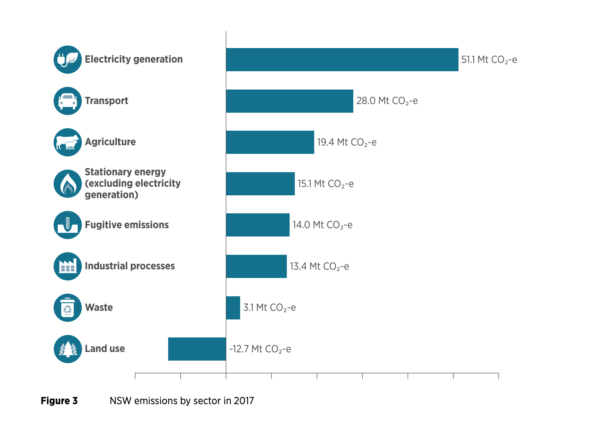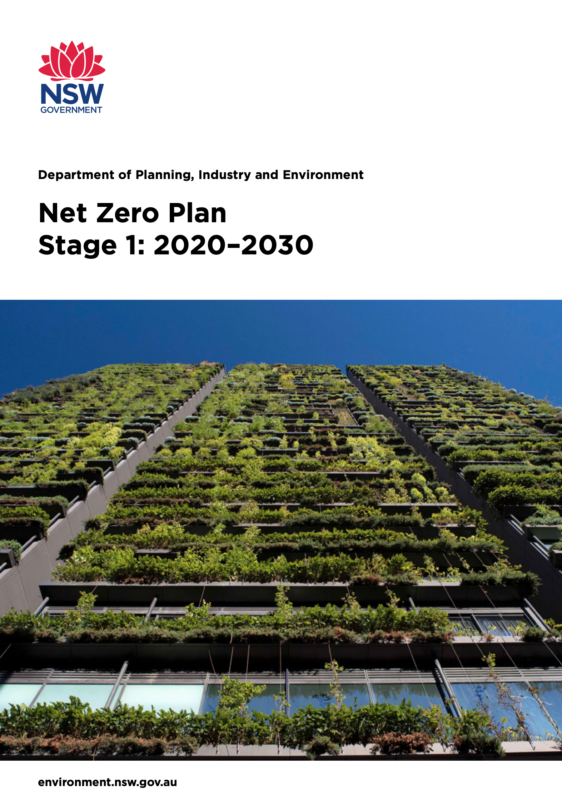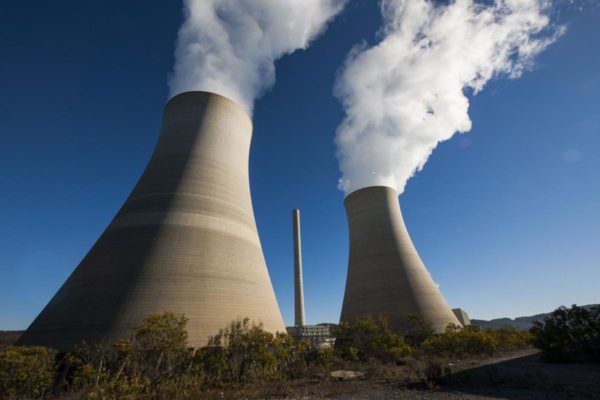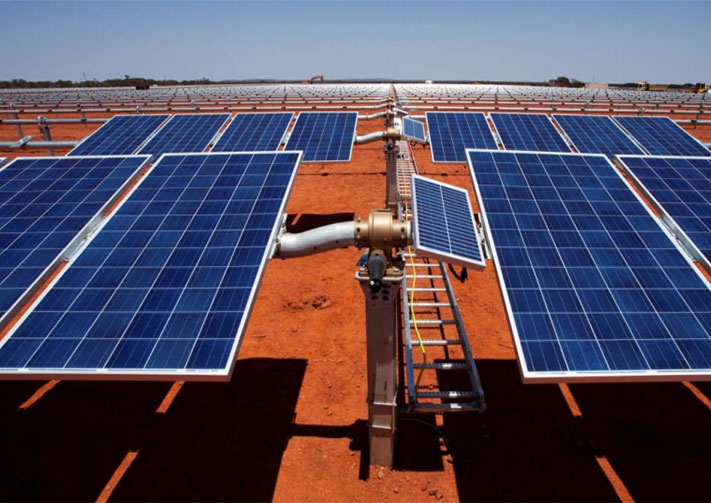With the release of its Net Zero Plan, Stage 1: 2020-2030 on the weekend, the New South Wales state government has outlined how it will achieve 35% reduction in carbon emissions from the 2005 emissions level, by 2030. Key to its strategy is increased support of residential, commercial and utility-scale solar PV.
The government sector will lead by example, building on its “ambitions and commitments” under the Government Resource Efficiency Policy (GREP) by: “more than doubling our solar target from 55,000 to 126,000 MWh by 2024”; and “offering our rooftops and other spaces for third parties to install solar PV systems”, says the policy document from the Department of Planning Industry and Environment.
Some already-announced clean-energy initiatives, such as the Empowering Homes program that will support 300,000 NSW households to install solar-battery systems; and the fast-tracking of the state’s first Renewable Energy Zone in the Central West of the state, have been rolled into the comprehensive blueprint for reducing emissions.
Matthew Kean, the NSW Energy and Environment Minister, says in his introduction to the Net Zero Plan, “in parts of our economy, low emissions technologies are becoming a commercially viable alternative to the traditional ways of doing things.
“Scaling up those technologies will play a critical role in getting to net zero”, he writes, but the Plan “also recognises that more needs to be done”, in order to drive the state to its 2050 net-zero goal.

Graph: NSW Dept Planning, Industry and Environment
EV revolution?
Transport, for example, as the second highest source of emissions (28.0 Mt CO2-e) in NSW after electricity generation (51.1 Mt CO2-e), is an obvious target for reductions.
In addition to the intention to replace Sydney’s public-transport bus fleet with electric buses and rolling out new hybrid diesel-electric passenger trains on regional lines, the NSW Government has honed in on two specific barriers to greater EV adoption in the state: “the lack of convenient, fast charging infrastructure and the limited range of affordable electric vehicle models in the market”.
Thus informed, the Plan pledges to fast track the growth of the electric vehicle market in New South Wales with an Electric Vehicle Infrastructure and Model Availability Program.
Among its initiatives it will run “competitive funding processes that co-fund” installation of fast-charging infrastructure across the state; and support amendments to the National Construction Code to ensure new buildings are EV-ready, with its overall aim being to encourage the state’s motorists to buy electric, “regardless of whether they live in their own home, a tenanted property or an apartment with our without a private car space”.
NSW vehicle fleet procurers will also be encouraged, perhaps incentivised — the Net Zero Plan is unclear — to buy EVs, with the intended outcome that “their bulk purchasing power will incentivise importers to sell a greater range of electric vehicle models” in Australia.
The Plan recognises that consumers can currently choose from only 22 electric vehicle models, of which the cheapest is Hyundai’s IONIQ Plug-in Hybrid, at $45,000; a scarcity of choice and price range that it says has led to only 47,389 plug-in hybrid and electric vehicles on NSW roads in 2019, of the roughly 5.25 million registered vehicles (Motor Vehicle Census, January 2015) in the state.
Where embedded emissions meet offsets?
The provision of comparable emissions information at the point of sale will also help consumers make purchasing decisions in relation to vehicles and other goods and services.
Although such coding or standards have not yet been defined, the Net Zero Plan states: “The NSW Government will require key information about the financial and environmental impact of certain goods and services to be provided at the point of sale”, in addition, the Government will “provide consumers with opportunities to easily offset the carbon emissions associated with the goods and services they use and reinvest this money in NSW-based projects such as revegetating our national parks or supporting remote communities to install solar.”

For business — not energy as usual
As the value of solar energy is more frequently realised in reducing the costs of heating and cooling processes used in manufacturing; and as equipment manufacturers provide electric alternatives to previously diesel- or gas-driven tools and plant, businesses are recognising the benefits of transitioning to cleaner methods of production, but the high upfront capital costs of making the switch can still prove prohibitive.
With this in mind, as part of the Net Zero Plan,the NSW Government “will establish a $450 million Emissions Intensity Reduction Program to support businesses to transition their plant, equipment and processes to low emissions alternatives”.
Program funding from the state will be matched by a $450 million Commonwealth commitment to NSW, from its Climate Solutions Fund, which supports Australian “businesses, farms and land managers” to take practical low-cost actions to reduce emissions.
The Plan offers the case study of a Moree cotton farmer’s heavy reliance on diesel-powered irrigation during low-rainfall periods in spring and summer; NSW Government support enabled the business to upgrade to an off-grid solar-diesel hybrid power plant which reduced its diesel consumption by more than 60%, and saved the grower more than $45,000 a year.
The State of hydrogen
After driving uptake of proven emissions-reduction technologies (Priority 1), and empowering consumers and businesses to make sustainable choices (Priority 2), the Berejiklian Government’s third priority outlined in the Plan is to, “Invest in the next wave of emissions reduction innovation.”
This is loosely linked to strategies such as: emissions abatement and productivity improvements in primary industries (for example, carbon-neutral farming through offsetting emissions with tree planting, and directly reducing emissions from livestock); and a Green Investment Strategy that will diversify sources of “revenue and funding to support public and environmental outcomes”, and “attract new investors” to help the NSW economy align with global trends.
Priority 3 can also be assumed to relate to the development of the state’s own Hydrogen Program, intended to “boost the commercialisation of low-emissions hydrogen production and applications”.
A target of injecting up to 10% hydrogen in the state’s gas network by 2030, “could have benefits for the transport, energy storage, ammonia, glass, metal and electronics production industries”, according to the policy document.
The Net Zero Plan also posits holding hydrogen in the gas network as a renewable energy storage solution — “essentially using it like a large battery to help firm up renewable energy generation”.
The NSW Government’s hydrogen strategy recognises that production of low-emissions hydrogen has yet to be proven to be economically viable, but suggests that investment in testing technologies at scale could contribute to the development of a $1 billion market for hydrogen by 2030.
It says, “The program will require co-investment from the private sector and is identified as a priority program for Bilateral funding.”
Reckoning with support of fossil fuels
“Bilateral” is shorthand for funding made available under the Commonwealth-NSW Government Memorandum of Understanding on Energy and Emissions Reduction Policy signed in February, which earmarks $2 billion for emissions reduction over the coming 10 years and will fund or co-fund many of the new initiatives outlined in the Net Zero Plan, Stage 1: 2020-2030.
The MoU, however, also includes agreements to increase gas supply, and to maintain supply of coal to Mount Piper Power Station.

Image: Energy Australia
And the Net Zero Plan includes a Coal Innovation Program that focuses on investment to provide “coal operators with direct, strategic incentives to capture and reuse methane released during mining”. It adds that, “Emissions reductions from the resources sector could provide a new revenue stream for mines, increase productivity, improve mine safety and improve air quality.”
How emissions mitigated will add up for these fossil-fuel enticements remains unclear, but the state Government says that “based on the new initiatives set out under this Plan, emissions in New South Wales are expected to reduce by 35.8 megatonnes by 2030”.
The Plan also sets out its own governance and the various reporting mechanisms on which tracking its progress towards 35% by 2030 will be based.
Solar searching and fossil-fuel fence sitting
Despite fossil concessions, having the policy in place is a boost to confidence in the state’s renewable-energy industry, given: it encompasses support of transmission infrastructure (via the MoU) to bring more renewables online; its pledge to “support the development of a regulatory framework … focused on bringing new, lower cost generation into New South Wales”; its subsidy of home batteries to help consumers realise greater benefits from solar and participate in the opportunities for distributed resources; and its dedication to working through the potential for hydrogen in the clean-energy mix.
Although several goals and initiatives remain to be fleshed out and accounted for in terms of emissions reductions, the Plan shows promise and a measure of good faith in addressing the concerns of the NSW electorate in relation to mitigating climate change.
Kean writes in his introduction: “New opportunities, inconceivable today, will emerge over the next decade. For these reasons, this Plan should not be seen as the final word on emissions reduction between 2020 and 2030, but a foundation on which we will build.”
This content is protected by copyright and may not be reused. If you want to cooperate with us and would like to reuse some of our content, please contact: editors@pv-magazine.com.









1 comment
By submitting this form you agree to pv magazine using your data for the purposes of publishing your comment.
Your personal data will only be disclosed or otherwise transmitted to third parties for the purposes of spam filtering or if this is necessary for technical maintenance of the website. Any other transfer to third parties will not take place unless this is justified on the basis of applicable data protection regulations or if pv magazine is legally obliged to do so.
You may revoke this consent at any time with effect for the future, in which case your personal data will be deleted immediately. Otherwise, your data will be deleted if pv magazine has processed your request or the purpose of data storage is fulfilled.
Further information on data privacy can be found in our Data Protection Policy.